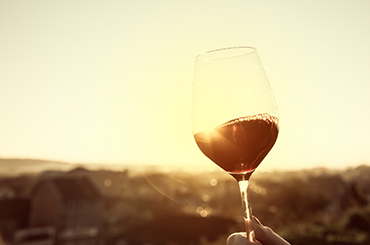If asked the desert island question, phrased as a choice of wine from a singular culture rather than a single category or bottle, I would choose Italy. It is an easy choice. Why? It is simply impossible to get tired of drinking Italian wine.
Firstly, the sheer multitude of indigenous – or as the Italians like to call them ‘autochthonous’ – grape varieties, subsumes that of every other wine-growing culture put together. In essence, Italy does diversity like no other.
Secondly, Italian wines don’t get in the way. What I mean by this is that their savoury aura, from the viscous, pungently mineral whites of the deep south, to the frisky, saline notes of the Adriatic and the skin-inflected amber expressions from the north, serve the joys of imbibing with a noble effortlessness. There is seldom aromatic exuberance, never excessive fruit and yet, more often than not, the wines boast a mellifluousness that neither impedes on conversation nor what is on the plate (in Italy, this is inevitably delicious).
And then there are the country’s reds, largely defined by a dry, structural patina of tannin and acidity. Seen through the lens of Australia, they seldom shout, but rather etch a structural groove that shimmies with food, making one salivate for the next sip – and the next glass.
From the profundity of nebbiolo, which in Italy is manifest as Barolo and its sibling Barbaresco, to the edgy twirl of sangiovese across Tuscany and its neighbouring zones of Umbria and Emilia-Romagna; the rustic sturdiness of montepulciano, aglianico and bonarda; the magnificent lambrusco, sagrantino and the quaffable cavalcade of refosco, marzemino, corvina and frappato; and the litany of other worthy candidates for wines that define cultures and established turf, there is more than something for every taste.
Waves of Italian emigration (and the collapse of their early cash crops, including tobacco in bastions of settlement such as the King Valley) and the effusive joy and humanity intrinsic to the Italian culinary experience have meant that Australia now boasts a plurality of Italian varietal expressions, greater than any other New World wine-producing country. Many are worth celebrating.
Here’s a go-to list:
Luke Lambert Nebbiolo: featured recently on the front page of the New York Times, this is Australia’s most lauded Italian implant.
Castagna: biodynamic energy embeds itself across the estate’s nebbiolo, sangiovese and blends.
Billy Button: exceptional value, with the friulano and nebbiolo particular standouts.
Traviarti: a tiny, artisanal producer in Beechworth making exceptional nebbiolo and hands down the finest barbera in the country (blended into a delicious mix).
Pizzini: the most traditional nebbiolo in the land, with an uncanny capacity to age and grow in stature over a decade or more.
Koerner: a delicious array of Italian-inspired reds, gently extracted, slurpy and dangerously delicious.
Thick as Thieves: fibrous nebbiolo with notes of tea leaf, sandalwood and orange zest.
Latta: I was thoroughly impressed by the recent swag of wines tasted for the impending Halliday Wine Companion guide. They display a giddy thoroughfare of fruit and herbal quotients, melded into a detailed stratum of textures. Delicious and invigorating.
Lethbridge: a ferrous grunt to the estate’s sublime nebbiolo mitigates any excess of sweetness. Nebbiolo ‘Australiano’, with Italian mettle.
Fall From Grace: a twine of herbal tannin and acid crunch lays down eminently gulpable Nero d’Avola and Montepulciano, all soused with bitter cherry amaro and variable degrees of dusty, plummy fruit.
Beach Road: among the pioneers of Italian varietal expressions in the country. The red and rosé hewn of Aglianico, often called the ‘Barolo of the south’, boasts South Aussie generosity meshed with ferruginous grip.
Aphelion Sagrantino: a grape that boasts the most concentrated phenolic arsenal of colour and tannin known to man. And it’s not thirsty, benefiting the majority of Australian viticultural zones where water is in short supply. Serve with a slow braise.





